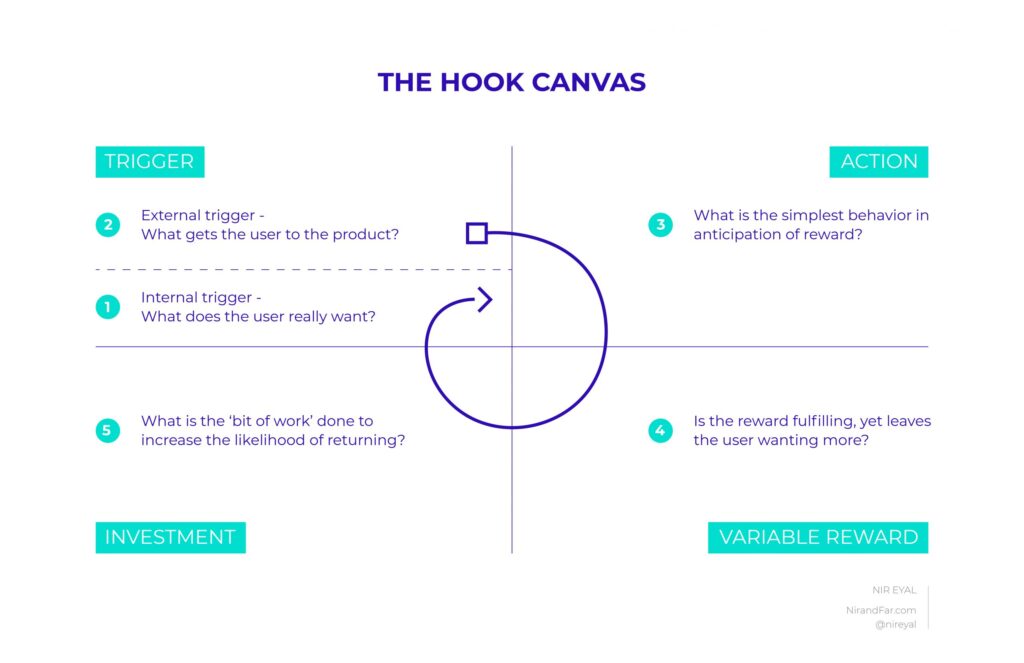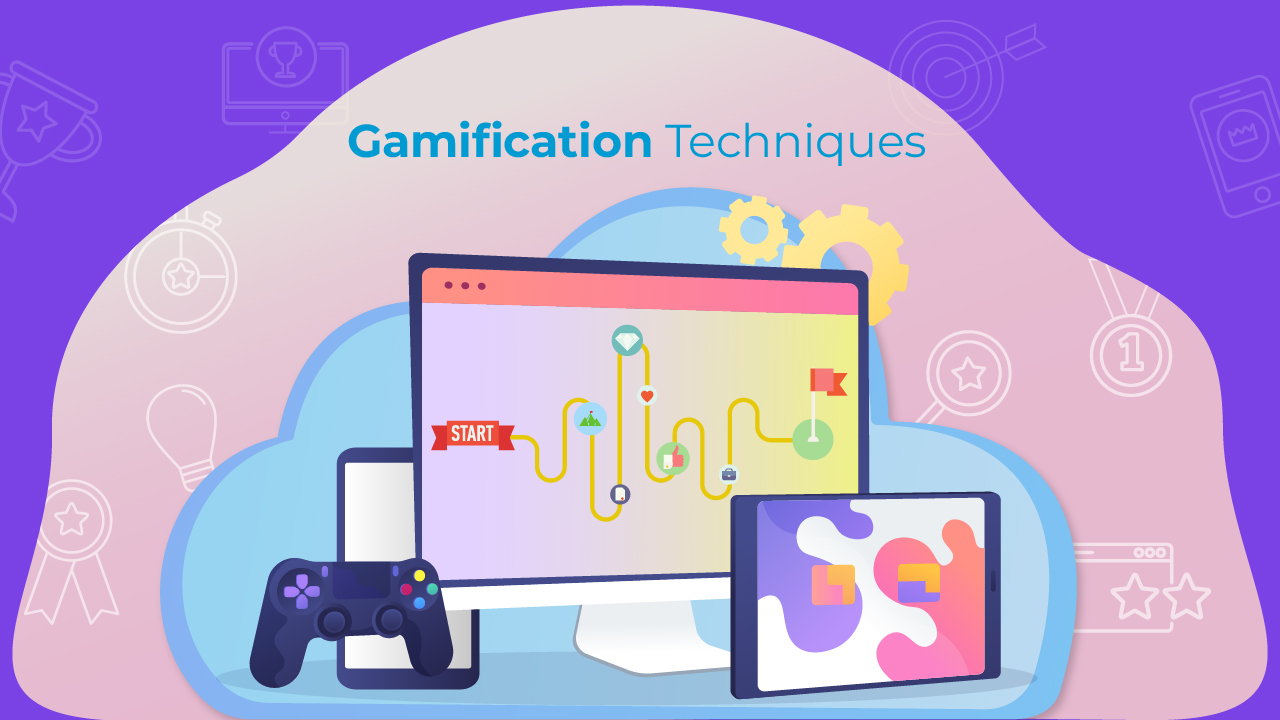Organizations spend billions every year to improve employee engagement at workplace. Study shows employee disengagement costs companies between $450 and $500 billion every year. It is also observed that companies with high engaged workforces are said to be 21% more profitable and 17% more productive. Having engaged employees leads to higher productivity, efficiency, and innovation.
People love games. It provides context, engagement, challenge and thrill to complete the journey. Gamification in eLearning motivates learners by captivating their desires to complete, earn recognition and a feeling of accomplishment. Training modules that use gamification encourage learners to continue progress through the module, provides instant feedback and constantly quantifies and reward learners which satisfies the need for recognition.
An example of an organization named Autodesk, a software company that introduced gamification to attract new customers. The company introduced variable reward system to motivate the users and saw an increase in trial usage by 54% and 15% increase in buy clicks.
Learning strategy and business outcomes need to be more aligned
Aligning learning strategy to business outcomes is the top priority of any organization. Organizations are always looking for innovative ways to build learning strategies to better integrate learning with their business keeping in mind the preference of modern learners. Gamification for learning is one of the learning strategies used by many organizations to make learning a part of organization’s mission and also to add value for its employee.
1.Enhance Job Performance: A competitive environment that praises good work can lead to a happy workplace and ultimately improve overall employee performance. An example of an organization that introduced game based learning to boost performance enhancement, Liveops is a call center in Scottsdale, Arizona, United States. The company introduced a new gamified system where employees could earn points based on different metrics such as – the speed of completing customer service calls, the total number of calls handled and the level of customer satisfaction. The company noticed an increase of 80% adoption rate in the first week and a significant improvement in employee work performance.
2.Talent Retention: The key priority of a company is to retain and develop top talent. Be it training new joiners or existing employees to update their skills, training and development is an ongoing process. Employers can introduce learners to different game mechanics like leader boards, experience points, badges, characters, feedbacks with defined goals, which make learning more engaging and helps learners to understand things better. Gamification can keep employees connected, energized and motivated to learn and grow in the organization.
3.Increase Employee Engagement: It is observed that when the employees are deeply involved in their roles it results in increase of their team’s productivity. Acknowledging your employee’s efforts by giving them virtual rewards, recognition will make them feel motivated and inclined towards the organization. Engaged and motivated employees are loyal and tend to work in the organization for a longer period of time. An example of an organization which introduced game-based learning to boost employee engagement, Target is a retail store. Target’s Cashier Game was introduced as a gamified system where the cashiers can receive instant feedback by playing a game with red and green lights that blink to show if the items were scanned optimally during the checkout. As a result, the cashiers receive authentic and instant feedback as a form of reward.
4.Development of Cognitive Skills: It is believed that the more you exercise your brain, the stronger it becomes. An example of this is that solving a puzzle is like doing push-ups for your mind. In a study performed by Dr. Aliya Hisam, teens who played video games performed better on tasks that involved reasoning, mathematics, and analogy. Learning faster and applying what you learn is the result of having an improved cognitive ability. As a result of the game, cognition is improved, resulting in improved learning performance. Game based learning in workplace can aid in the development of cognitive abilities. The process encourages learners to absorb information and increases their thinking and problem-solving abilities. This makes the whole learning process better for the employees to understand and apply the things they have learned.
Importance of good gamification design to improve learner engagement and business performance
It is important to understand what drives the learners behavior to create training that are impactful. Nir Eyal, an entrepreneur, writer and behavioural economist, developed the Hook Model. The model helps describe how well-designed gamification improves employee performance by increasing learner engagement. Here is how the Hook Model works for gamified learning:

1.Trigger: The trigger is what generates the desired behavior of the learner. It cues the action which builds habits. A well-designed gamified learning must create a trigger to promote learner engagement.
2.Action: Now that a learner has been triggered it must result into action. A leaner should have sufficient motivation and the ability to execute the action. It motivates the learner to take action, which typically leads them to complete the course.
3.Variable Reward: A reward system recognizes the performance of learners throughout the game. Rewards and recognition are the most powerful tools that companies use to hook and motivate learners. The hook model rewards consist of three types: Rewards of the tribe, Rewards of the hunt and Rewards of the self. Rewards from the tribe are social rewards generated by social connections. In rewards of the hunt, you look for resources to gather information. Reward of the self is the quest for mastery, competence, and completion. In order to keep users engaged, rewards must satisfy their needs and leave them wanting to engage again and again.
4.Investment: Now that the learner has invested much of his time and efforts in completing the course, the more he will start valuing it. By connecting with the learner continuously, they are more likely to return for more, resulting in entrenched learning behavior.
Elements of Gamification:
Gamification elements in learning design increase engagement and motivation. However, it should be balanced throughout the course keeping in mind the different kinds of learners.
1.Achievements & Progress: The learners get a level of accomplishment and it motivates them to strive for further success. The certificate of completion is a symbol of achievement in training. In addition to leader boards, badges, points and progression bars. The levelling also provides elements of social status.
2.Rewards & Feedback: The rewards can be incorporated into the learning process as it is closely related to progress and achievement. Depending on the number of actions completed by the learner, the rewards can either be given at set intervals or based on the number of actions taken. Collectibles, bonuses and other resources used in games can be treated as rewards. Feedback gives the learners understanding of progress and achievement. An instant feedback improves the learners engagement as well as recall and recognition.
3.Personalisation: Having a visual image of what the character looks like creates a bond between the learner and the game which enhances learner engagement. An avatar is considered as an important game mechanic while designing a gamified project. An avatar is a visual manifestation of how the learner looks like in a game. Avatar selection and customization, character naming and interactive conversation (ICI) are a few examples of personalization.
4.Narratives: Learners will be motivated and interested when they experience an adventure, overcome a disaster, or win the competition. You need to incorporate a compelling narrative to illustrate the learning experience. Engage learners with characters, conflicts, and resolutions. Storylines that incorporate learner choices will keep learners engaged throughout the entire process. In today’s workplace where time and attention are becoming scarce and precious, people tend to move towards activities that are rewarding. It is vital for organizations to understand the role engaged employees plays in business success. Gamification can give employees a new way to obtain feedback at workplace and feel them rewarded with the opportunities to achieve and grow. Gamification ensures positive business outcomes and continued employee engagement.

